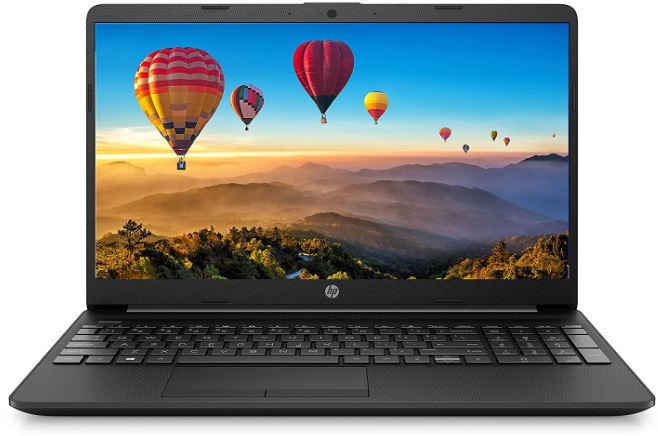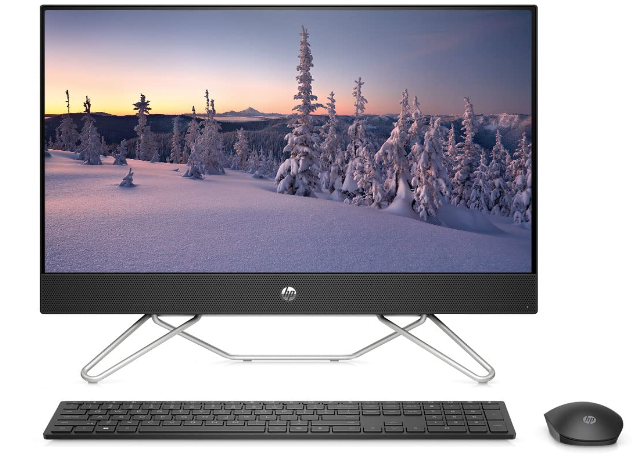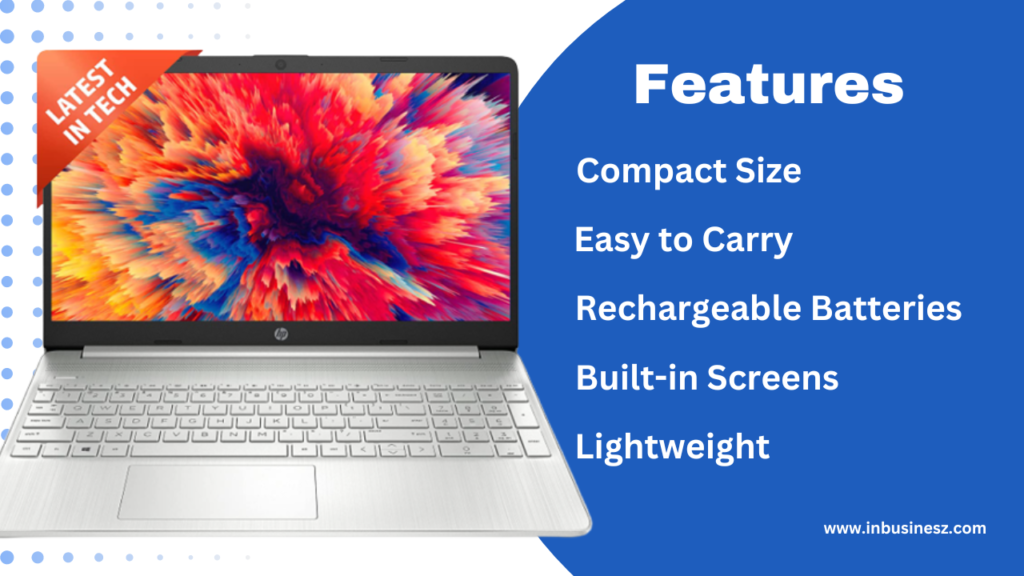If you are a student and confused about which is the best for you, a laptop or a desktop, after reading this article it will be easier for you to make the appropriate decision.
The choice between a laptop and desktop for students will depend on their needs and lifestyle. Laptop would be the best choice for a student who requires mobility and portability, while a PC would be more appropriate for those who need more processing power or want to upgrade their computer in the future. And suitable for students who require high performance for graphic and video workloads. Some popular laptop and desktop computer brands include Apple, Dell, HP, Lenovo, Acer, and Asus. It’s important to consider the factors before making a decision.
Which is Best for Students, a Laptop or a PC?
Laptop, because it’s portable to use and easily carry around wherever you want compared to desktop, which makes it an excellent option for students who need to move around frequently. They can easily be carried to different locations for group work, library or to classes.
Actually both desktop and Laptop have their own sets of advantages and disadvantages, and the choice between them will depend on the student’s needs, preferences, and lifestyle. Here are some factors to consider when deciding between a PC or a laptop for students.
Also Read – Best Laptop for Business and Personal Use
Laptop

Laptops are designed to be carried around easily, and are typically smaller and lighter than desktop computers. They can be used for a variety of tasks, such as word processing, browsing the internet, playing games, watching videos, and running software applications. Laptops can range in price from high-end to low-end, depending on the specifications and features included. Some popular laptop brands include Apple, Dell, HP, Lenovo, and Asus.
Here are some of the features of a laptop:
1. Screen: Laptops come with built-in screens of various sizes, with resolution ranging from 720p to 4k, making them suitable for a variety of uses. The screens can be either matte or glossy, depending on the model.
2. Keyboard and Mouse: Laptops typically come with inbuilt keyboards and touchpads or touchscreens for navigating and typing.
3. Battery: Laptops have built-in rechargeable batteries. Laptops can run on battery power, thus allowing students to work in locations with no access to power outlets or while commuting.
4. Ports: Laptops have several ports such as USB, HDMI, ethernet and more that are used for connecting external peripherals like a mouse, keyboard, external display, or other devices.
5. Storage: All laptops come with solid-state drive (SSD) or hard disk drive (HDD) storage options, and some also have memory card readers or expansion slots.
6. Operating System: Laptops typically run some kind of operating system (OS) such as Microsoft Windows, macOS or Linux, giving students access to various software applications.
7. Connectivity: Laptops can connect to Wi-Fi and Bluetooth networks and have built-in webcams and microphones for video and audio communication.
8. Space-saving: Laptops are compact, making them easy to store and take up minimal space in a dorm room or apartment.
Laptops have become ubiquitous for work, play, and communication. They come in different types – inexpensive netbooks, powerful gaming laptops, lightweight ultrabooks, or large-screen multimedia machines – providing options for any users.
Also Read – ASUS or MSI | Which is better laptop for gaming?
Desktop

A desktop computer is a personal computer designed to sit on a desk and is meant for use at a single location. Desktops are typically larger than laptops and come with separate components such as the monitor, keyboard, mouse, and central processing unit (CPU) that houses the main components of the computer, such as the motherboard, processor, memory, storage devices, and power supply.
Here are some of the features of a desktop:
1. Monitor: Desktops come with separate monitors that are larger than those of laptops and are available in a variety of sizes and resolutions.
2. Keyboard and Mouse: Desktops come with separate components, including wired keyboards and wired or wireless mice.
3. CPU: The CPU or tower is the main component of the desktop computer that houses the motherboard, power supply, and internal storage components.
4. Upgradability: PC are highly customizable, with the ability to upgrade different internal components such as RAM, graphics cards, and hard drives, allowing students to keep up with changing software requirements, making desktops a more flexible option for the future.
5. Power: PC can offer higher processing power, graphics capabilities, and storage than laptops. This makes them an excellent option for students engaging in intensive graphics or video editing workloads.
6. Operating System: Desktops run the same operating systems as laptops – Microsoft Windows, macOS, or Linux – and give users access to the same range of software applications.
7. Connectivity: Like laptops, desktops typically come with Wi-Fi and Bluetooth connectivity.
8. Ergonomics: PC are designed to be used with external peripherals such as a keyboard and mouse, which can provide better ergonomics for prolonged conditions.
Desktops come in different sizes – from small-form factor PCs to full-size towers – offering options based on yours requirements. They are popular in offices, universities, and homes, where users require more power and more extensive storage capacities than a laptop can offer.
Also Read – Top 10 Best Gaming Laptops Under 1 Lakh
Laptop Pros and Cons:
Like any technology product, laptops have their advantages and disadvantages. Here are some laptop pros and cons to consider:

Pros:
- Laptops are highly portable and allow you to work from anywhere, making them perfect for students, travelers and remote workers.
- Laptops have build-in screens, keyboards and touchpads and that minimize the need for external peripherals.
- Laptops now offer longer battery life than ever before, allowing you to work for hours without needing to be plugged in.
- Laptops today can be just as powerful as desktops, making them suitable for most computing tasks such as web browsing, word processing, video editing, and gaming.
- Laptops come with built-in Wi-Fi, Bluetooth and cellular connectivity options, making it easy to access the internet and other devices wirelessly.
Cons:
- Laptops can be more expensive than desktops with similar specs, especially when it comes to high-end models.
- Compared to desktop computers, laptops tend to have limited upgradeability options when it comes to the internal hardware components.
- Laptops can overheat if they’re used for extended periods or run intensive applications, such as gaming or video editing.
- Laptops come with smaller displays than desktop computers, which could cause eye strain or fatigue over prolonged use.
In conclusion, laptops have many benefits, including portability, convenience, battery life, performance, and connectivity. Still, they do have their drawbacks, such as cost, limited upgradeability, overheating, and smaller displays. Consider your needs and preferences before choosing a laptop.
Also Read – Best Laptop for Animation and 3D Modeling
Desktop Pros and Cons:
Desktops are a popular choice for work, gaming and home users. Like any technology product, desktops have pros and cons. Here are some pros and cons of desktop computers:

Pros:
- PC usually offer better performance than laptops in terms of speed, graphics, and storage capacity, making them capable of running resource-intensive applications and games smoothly.
- PC are highly customizable and offer a high degree of upgradability, which means you can replace parts like graphics cards or RAM when required to upgrade performance, extend hardware lifespan and keep up with new technologies.
- PC are better suited for multitasking since they typically come equipped with faster processors and higher RAM capacity that can handle running multiple applications at once without any loss of performance.
- PC usually have larger displays compared to laptops, making them ideal for tasks such as gaming, designing or video editing.
- PC generally more cost-effective than laptops, with more affordable hardware components thus meeting different budgets.
Cons:
- Desktop computers tend to be larger and bulkier, making it challenging to move around or transport.
- Because of its size and the fact that all the components are not integrated, desktops are not portable, lacking the flexibility and convenience of laptops.
- A PC requires a dedicated workspace to accommodate the tower/monitor, keyboard, mouse, and any other external peripherals used.
- Desktops tend to consume more power than laptops due to their high-performance CPUs, graphics cards, power supplies, and additional peripherals which could result in higher energy bills.
In conclusion, PC have many benefits, including high performance, upgradability, and multitasking capabilities, and larger displays for work, gaming, or entertainment. However, they do have their drawbacks, such as size, lack of portability, space requirements, and power consumption.
Also Read – Best Laptop Under 60,000| i5 11th Gen.
Also Read – MSI Crosshair 15 vs MSI Sword 15
Affordability:
Laptops and desktop computers both have their advantages and disadvantages for students. However, when it comes to affordability, laptops tend to be more cost-effective than desktops. You can find a decent laptop for a student with a low budget. In contrast, desktops can cost a bit more, depending on hardware components like the CPU, RAM, and graphics card. Laptop components are typically less expensive to replace than PC components, making it easier and cheaper to repair functionality problems or upgrade with hardware change over time.
Overall, when it comes to affordability, portability, and low maintenance cost, laptops are a better investment for students than desktops.
Laptop vs Desktop |FAQs:
1. Laptop or a Desktop should buy for a school work?
If you are constantly on the go and need a device that you can take with you to class or study groups, then a laptop would be a better option. However, if you have a limited budget and require better performance for more intensive software applications and projects, a desktop could be a better fit.
2. In general sense which is better, a PC or a Laptop?
PC is far better than laptop, PC is designed to be powerful and flexible, and are usually used for tasks that require more computing power than a laptop can provide, such as gaming, video editing, graphic design, programming, and scientific research. They can be customized with different components to suit specific needs and preferences, and can be upgraded over time as technology advances.
3. Best budget laptop for students?
Based on performance, features, and value for money, here are the best budget desktop computer options for students:
- Dell Inspiron 15 3000 Series
- HP Pavilion 15
- Acer Swift 3
- Lenovo Chromebook Flex 5
- ASUS VivoBook 15
- Lenovo IdeaPad 3
- Apple MacBook Air
- Acer Aspire 5
- Asus ZenBook 13
- Lenovo IdeaPad 5
4. Best budget desktop computer for students?
Based on performance, features, and value for money, here are the best budget desktop computer options for students:
- Acer Aspire TC-895-UA92 Desktop
- HP Pavilion Desktop
- Lenovo IdeaCentre 3
- Dell Inspiron 3880 Desktop
- Acer Chromebox CXI3
- HP Elite Slice G2
- Dell Optiplex 3070
- Lenovo ThinkCentre M75q Tiny
- Apple Mac Mini
Visit our website daily for latest update – inbusinesz.com
